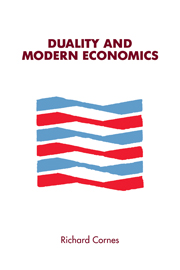Summary
Since the early 1970s, the use of dual techniques has become widespread among economists. Familiarity with basic duality theory is now beginning to be taken for granted among graduate students, whether their interest is in economic theory or in empirical applications of that theory. In view of this, the paucity of simple introductory expositions of these techniques is both surprising and disappointing. The existing microeconomic textbooks understandably mix duality in with a lot of other material, which is fine for the current generation of graduate students, but inconvenient for those who have a strong orthodox microeconomic background and who wish to catch up with recent developments in the techniques of modeling. In addition, the textbook treatment typically is limited to presenting a few basic definitions and standard results, together with a demonstration of how the new techniques can facilitate the derivation of well-known standard results. There is little indication of the potential attraction of duality as part of a graduate student's research kit, and therefore little motivation to acquire more than a rudimentary familiarity with dual formulations.
My aim in this book is to provide a brief and informal introduction to the fundamental ideas lying behind duality theory and to show not only the principal results but also how they can be applied to a variety of economic problems. The emphasis is on geometric and economic intuition rather than on rigorous development of general results.
- Type
- Chapter
- Information
- Duality and Modern Economics , pp. xi - xiiPublisher: Cambridge University PressPrint publication year: 1992



